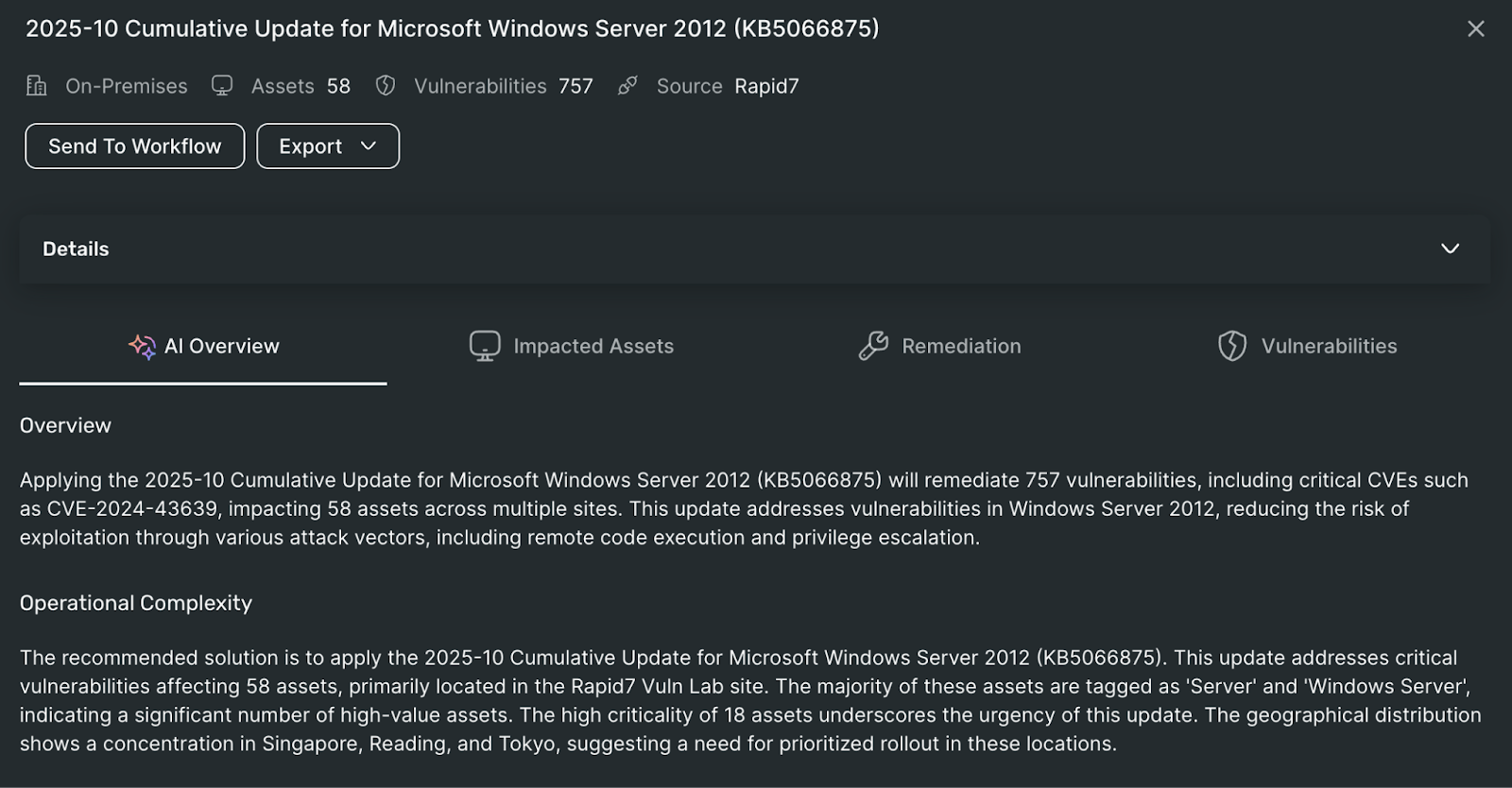Exposures are rising faster than security teams can decide what to fix, and those teams often lack a clear view of business impact per risk. Which critical assets are exposed? Are exploits active? What are the operational consequences? Without that context, prioritization loses focus, the wrong issues take precedence, and no one has credible next steps to move work forward.
The gap is real: Forrester’s The State Of Privacy And Cybersecurity, 2024 report states that a “lack of comprehensive vulnerability and exposure remediation prioritization strategy is among the biggest IT/security challenges for 22% of enterprise security decision-makers’ organizations.” This means analysts are spending time grinding through lists instead of reducing risk.
Dashboards help teams visualize issues, but they don’t always provide the insight needed to make decisions. That necessary context lives in too many places, and teams must spend valuable time stitching it all together. The window to remediate is unforgiving: The 2025 Verizon Data Breach Investigations Report finds vulnerabilities are exploited within days, while remediation often takes weeks.
To support security analysts in their efforts, the Rapid7 Remediation Hub will feature AI-generated risk intelligence for Surface Command and Exposure Command customers beginning in late November.
Remediation Hub takes a remediation-based view of vulnerability management, rather than focusing on individual CVEs. It groups related findings and points teams to the fixes that remove the most risk across assets and environments. Instead of chasing the single highest-scored CVE, the focus is narrowed to where work is most impactful, driving bigger risk reduction and employee productivity.
Adding AI sharpens that focus. AI generated risk intelligence within Remediation Hub helps turn noise into action. To support employee decision-making, each summary uses AI to fuse exploit signals, business context, and vulnerability data into a short, plain-language brief with clear next steps. From there, security teams can open tickets, target high-impact asset groups, or trigger automation. The result: shared context, fewer debates, faster risk reduction and reduced mean time to remediate (MTTR).
From noise to clear next steps
Risk summaries pull the “why, where, and how” into one scannable view. See real-world exploit signals (CISA KEV, EPSS, etc.), the criticality of impacted systems, and any toxic chains that expand blast radius. Scope and complexity are clear at a glance – affected environments, patch coverage, and likely blockers – plus guided actions, including patches, compensating controls, and IT-ready handoff.
⠀

Faster fixes where it matters most
AI-generated intelligence helps you turn context into action from day one:
Prioritize with clarity – concise summaries grounded in exploitation and business impact
Explain the “why” to IT – ready-to-use context for tickets and change windows
Justify urgency with facts – see how many vulnerabilities are under active exploitation and how many threat feeds flag them
Estimate effort instantly – scope, patchability, and blockers for credible change windows
Mitigate when you can’t patch – guidance on compensating controls and alternative actions
Built for productivity
Remediation Hub is built to improve how teams work. AI-generated risk intelligence extends that vision, reinforcing the “act once, solve many” approach (grouping fixes by root cause) and layering in clear, plain-language context.
AI distills risk and vulnerability data from across your tools into actionable guidance – what to fix, why it matters, and how to roll it out – so decisions happen faster and MTTR drops. And with 300+ out-of-the-box integrations, handoff happens in the systems your teams already use.
When paired with Intelligence Hub, curated threat actor and campaign insights surface alongside each AI Summary. Joint customers can pivot to Intelligence Hub from Remediation Hub with a single click to go deeper on these insights.Validate urgency with real-world exploitation evidence, justify change windows, and execute the right fix – all within the Rapid7 Command Platform.
Get started
Ready to move from exports and debates to clear, guided action? Open Remediation Hub in Exposure Command to prioritize fixes with confidence and accelerate remediation.
New to Exposure Command? See how it unifies visibility, prioritization, and remediation all in one platform.
- Artificial Intelligence
- Automated Remediation
- Exposure Command
- Surface Command